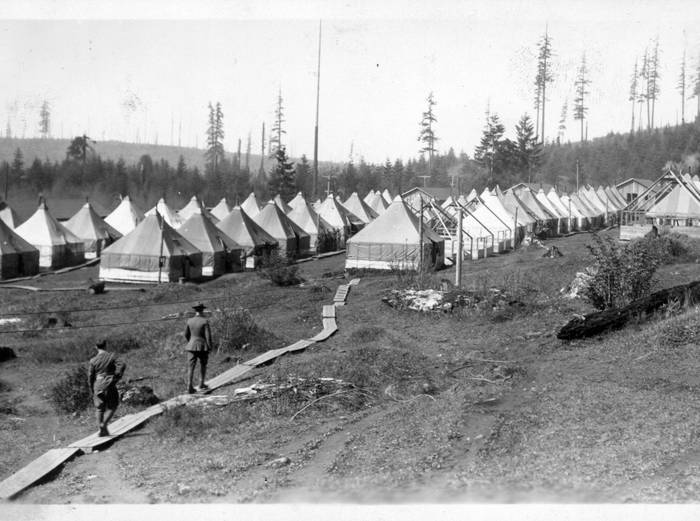
In the early days, the job seemed insurmountable. Over 19 years ago, an interagency team decided to clean up the dangerous legacy of military training at a former Army training facility in Clark County in Southwest Washington. Just last month, the team cleared their biggest hurdle.
The Camp Bonneville cleanup site is huge, spanning about six square miles or 4,000 acres. Environmental contamination has been a concern here, with contaminants like lead, perchlorate, and other explosive compounds in groundwater and soil. Staff from the EPA, Department of Defense, Clark County, and Ecology partnered to clean up the site.
Over the years, they completed nearly all of their cleanup goals, but one enormous barrier had to be managed before finishing the job: the entire site needed to be inspected for the potential remains of military munitions. Munitions cleanup is complete after 25 years, and plans to make part of the site a park are underway. After 25 years, munitions cleanup is finally complete and plans for a park are underway.
Decades of military training left a lot to clean up
Camp Bonneville was a training hub for soldiers from 1910 to 1995, through both world wars, and the Korean, Vietnam, and Gulf wars. This led to a serious issue of unexploded ordnance — bombs, shells, grenades, etc., that did not detonate when they were used for training. Large artillery was focused in the middle of the site — the 400-acre Central Impact Area — where unexploded ordnance are more concentrated, more dangerous, and may be buried as deep as ten feet underground.
Munitions cleanup was systematic and slow
Over the past 19 years, highly-skilled crews have meticulously scanned almost 1,000 acres of the site — through forests, fields, even under wetlands — for unexploded munitions that could invite risk.
They used handheld locators designed for unexploded ordnance and worked along a grid to ensure thorough coverage, exploding live munitions where they were found. Quality assurance checks often led to repeating scans and expanding the size of areas that received extra scrutiny.
Vision and commitment paid off a few weeks ago, when Greg Johnson, a program manager and munitions expert with Clark County who’s been with this project nearly since its inception, paid the last bills and approved the last quality assurance check, making the end of munitions clearing official.
Referring to that final invoice, Johnson said, “It’s been a long hard journey for all of us, I plan to frame this and place it in the Camp Bonneville museum.”
Public access will vary from parks to closures
With munitions cleared, plans for contamination cleanup and the future of Camp Bonneville come into view. It will join the ranks of several iconic recreational areas in Washington with military histories like Port Townsend’s Fort Worden, Fort Flagler on Marrowstone Island, and Fort Columbia near the Astoria-Megler Bridge.
While the 500-acre Central Impact Area will be off limits to the public forever, 3,000 acres will be used as a wildlife management area, and the 450-acre Central Valley Area will become a park, firing ranges will become sports fields and RV, tent, and yurt camping.
Next steps: planning for environmental cleanup
Now that the munitions clearing work is done, the Camp Bonneville team can focus on the final round of plans for environmental cleanup at the site.
We expect environmental cleanup plans to be drafted and ready for public review and comment within the next year. If you’d like to be notified about public comment opportunities for Camp Bonneville, contact Megan MacClellan.



